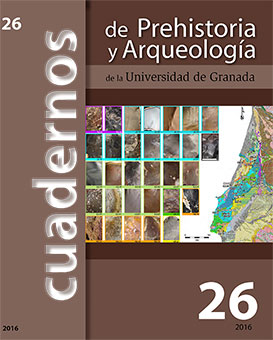THE FLINT IN THE NW IBERIAN PENINSULA. STATE OF THE ART
Main Article Content
Abstract
The Technological studies of the Galician prehistory have focused on the chrono-cultural
characterization of the lithic assemblages, obliterating the studies of raw material pro- curement strategies. On the other side, the predominance of local raw materials, such as quartz and quartzite, has placed the research on flint implements in a secondary role, a priori considered as a scarce resource in the region. Although some outcrops have been discovered, usually related to hydrothermal contexts, they have not been properly described or analysed, preventing us from getting a good knowledge about their circulation patterns across NW Iberia.Nevertheless, the works conducted during the last two decades allow us to obtain a initial framework about the evolution of the role played by flint in the Prehistoric lithic assemblages. Although during the Lower and Middle Palaeolithic it is a scarce resource, from the Upper Palaeolithic onwards there is an increasing demand leading to the discovery and exploitation of new outcrops and a higher incidence of flint in the lithic assemblages, linked to specific chaînes opératoires. Last approaches in the Late Prehistory studies have shown the existence of material from allochthonous and distant origin, specially the long blades linked to the megalithic grave-goods, along with the punctual exploitation of autochthonous flint outcrops.



